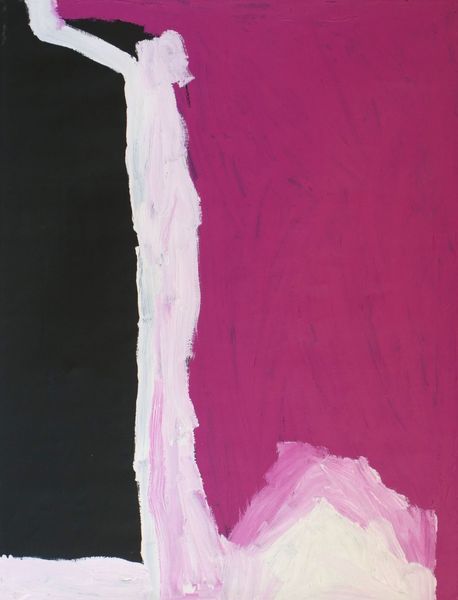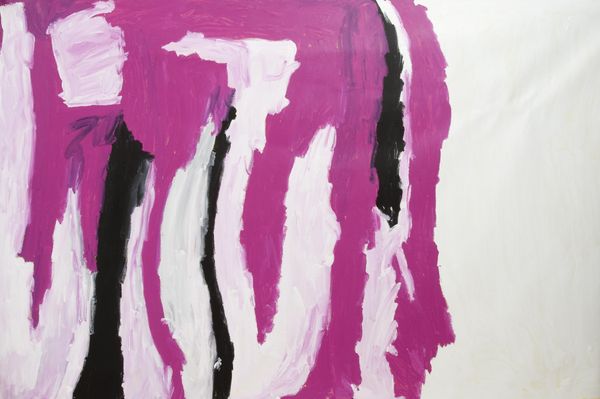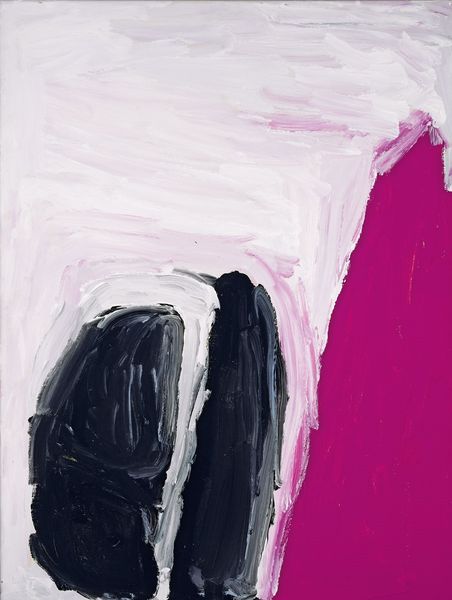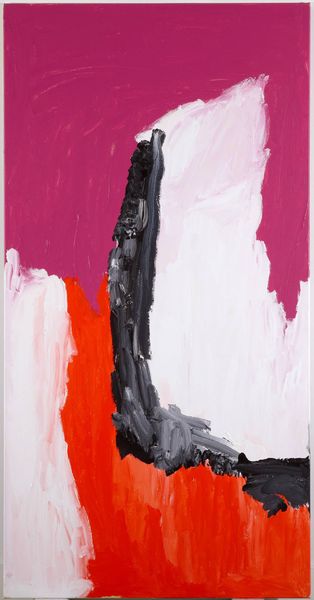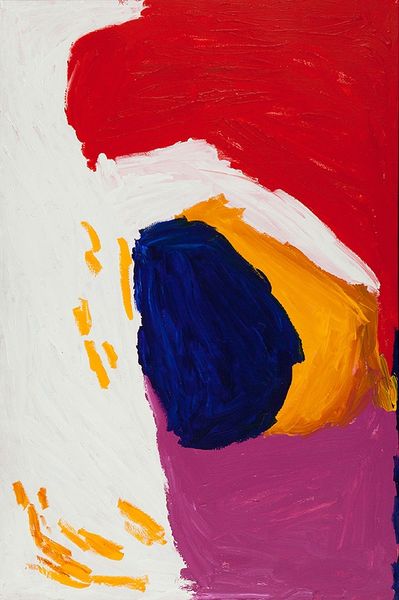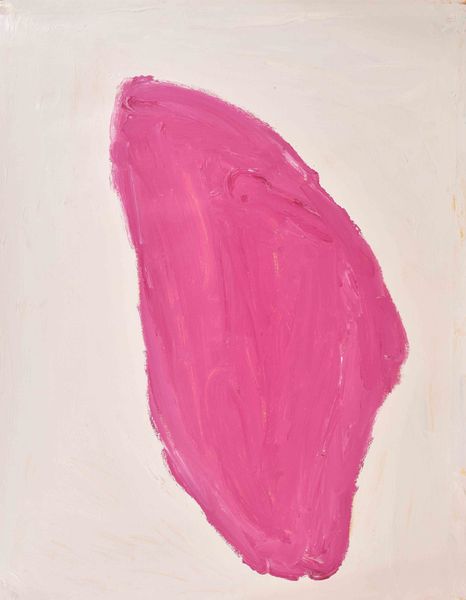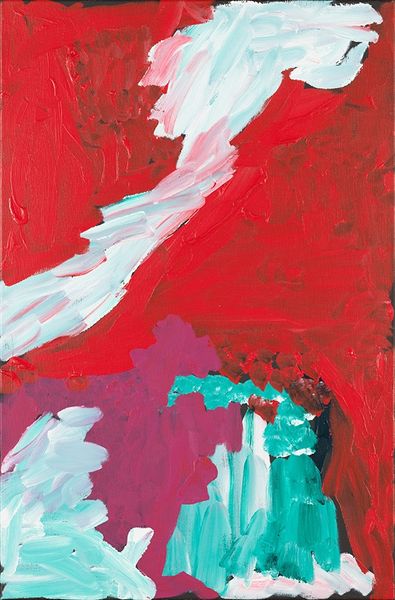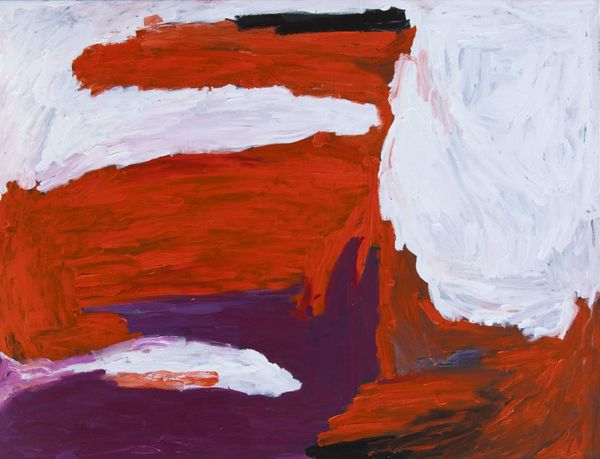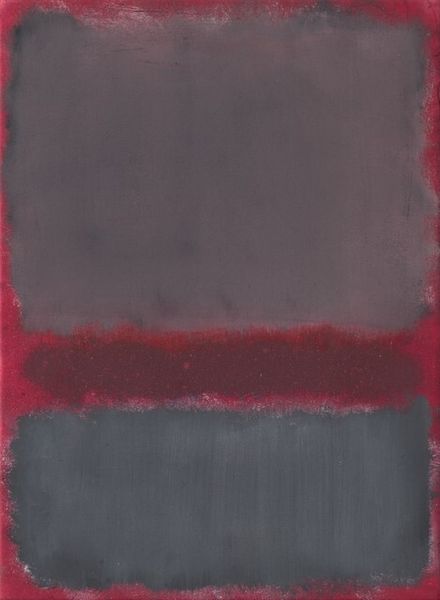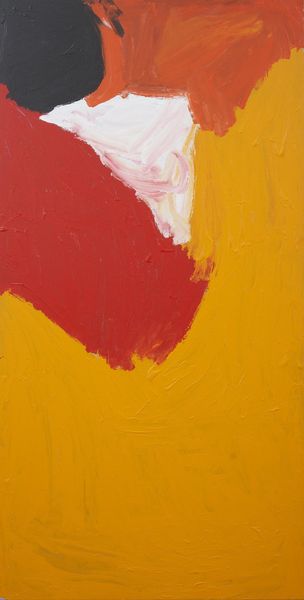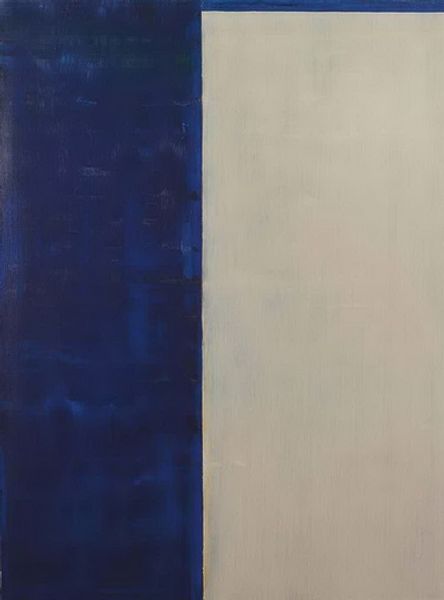
Copyright: Sally Gabori,Fair Use
Editor: This is "Dibirdibi Country," painted by Sally Gabori in 2010, using acrylic on canvas. The colors are so striking, almost jarring, but there’s something incredibly captivating about the simplicity. What do you see in this piece? Curator: I see a powerful statement on place and identity, and a reclaiming of Indigenous narratives within the context of modernism. Gabori, painting late in life, used abstraction to represent her ancestral land, Dibirdibi, subverting colonial expectations of Indigenous art. The colours aren’t just aesthetic; they embody her connection to Country and represent a deeply personal and political act. How does the title inform your interpretation of these seemingly abstract forms? Editor: That’s fascinating. Knowing it's a representation of her homeland makes the painting feel almost like a map, with the colours and shapes representing specific landmarks or features. The vibrant pink could be the land and flora bursting to life, with the dark blue like a deep, winding river? Curator: Exactly. It's a decolonisation of the canvas. Colour-field painting was historically dominated by white, male artists, so Gabori's entry into this space reclaims it, and centers Indigenous perspectives. We see the artist using her aesthetic choices, and historical background to challenge hegemonic forces within the Westernized modern art landscape. How do you see this working within abstraction? Editor: I see her abstraction becomes a language in itself, a way to communicate the essence of Dibirdibi, but also resist a literal, perhaps ethnographic, interpretation of her culture by outsiders. The pink no longer simply becomes pink, the blue now the symbol of resistance, as the entire message unfolds through a personal cultural history, not colonial influence. Curator: Precisely! And in doing so, Gabori expands the possibilities of what abstraction can mean, and what it can represent, reclaiming visual space for herself and her community. Editor: Wow, I definitely see it differently now. It’s more than just pretty colors; it’s a powerful act of cultural expression and resistance through ancestral reclamation.
Comments
No comments
Be the first to comment and join the conversation on the ultimate creative platform.
